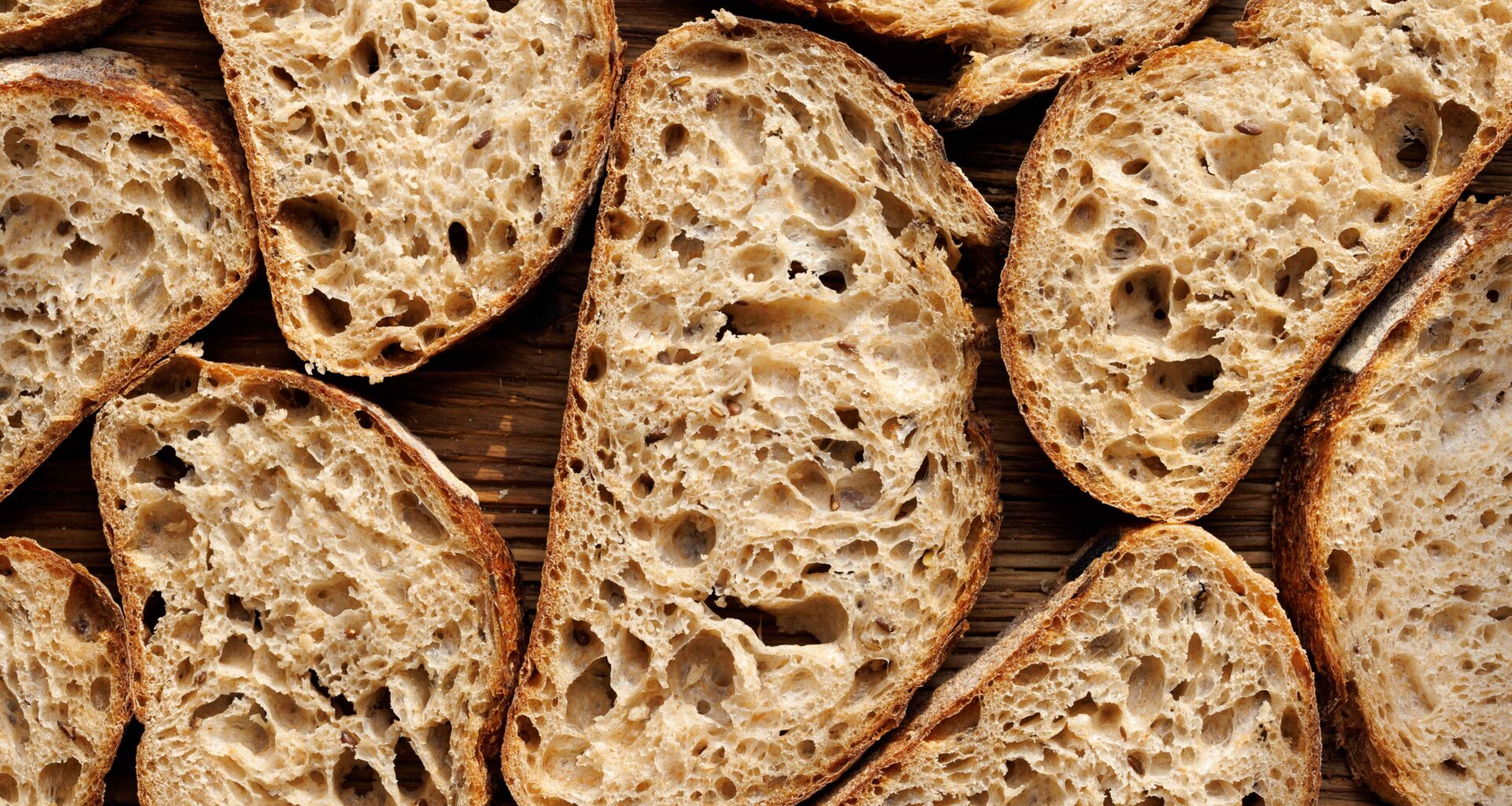Sourdough undergoes natural fermentation rather than relying on additives found in baker’s yeast. Because of this, it might have more benefits than other types of bread. Here are three ways sourdough can have a positive impact on your body:
The fermentation process used to create sourdough helps break down gluten, a protein found in grains such as wheat, barley, and rye that is resistant to digestion.
Sourdough also has lower levels of other compounds known to cause gastrointestinal issues, including:
FODMAPs
Phytates
Tannins
Trypsin inhibitors
This means that sourdough may be easier to digest and result in fewer gastrointestinal symptoms compared to commercially leavened bread.
Study Highlight: A 2023 review of 25 studies showed that people who switched from bread made with baker’s yeast to sourdough bread reported significant improvements in gastrointestinal comfort.
The fermentation process used to make sourdough produces organic acids, such as lactic and acetic acids, which help slow the absorption of starch in the digestive tract. When food is digested slowly, glucose is released more gradually into the bloodstream, preventing a significant spike in blood sugar levels after eating.
This means that compared to other breads, sourdough is low on the glycemic index, a classification system that ranks carbohydrate-rich foods on a scale of 0-100 according to their impact on blood sugar levels. The glycemic index estimates how quickly food is digested and absorbed into the bloodstream.
For example, the GI for a 30-gram serving of bread made with white wheat flour is 71, while the glycemic index for a 30-gram serving of sourdough bread is 54.
Anti-nutritional factors found in whole wheat or grain breads, such as phytates, tannins, and trypsin inhibitors, can make it harder to absorb nutrients from food. Phytates, in particular, can bind to minerals like magnesium, calcium, and iron, blocking their absorption in the digestive tract.
The fermentation process used to make sourdough breaks down anti-nutritional factors like phytates. In fact, some studies suggest that certain sourdough formulations can degrade over 96% of the phytic acid in the dough.
Here’s the nutrition breakdown for a medium-sized, 59-gram slice of sourdough made with enriched white flour:
Calories: 188
Carbs: 36.5 grams
Fiber: 1.8 grams
Protein: 7.67 grams
Fat: 1.26 grams
Iron: 2.28 milligrams, or 13% of the Daily Value (DV)
Copper: 0.088 milligrams, or 10% of the DV
Folate: 82.6 micrograms, or 21% of the DV
Thiamine: 0.252 milligrams, or 21% of the DV
Niacin: 3.17 milligrams, or 20% of the DV
Riboflavin: 0.218 milligrams, or 17% of the DV
Manganese: 0.33 milligrams, or 14% of the DV
Selenium: 17.5 micrograms, or 32% of the DV
Zinc: 0.619 milligrams, or 6% of the DV
While sourdough contains less gluten than other breads made with wheat flour, it’s not gluten-free and isn’t a good choice for people with celiac disease or those who are sensitive to gluten-containing foods.
If you’d like to enjoy sourdough but can’t eat gluten, choose a gluten-free sourdough product. Gluten-free sourdough bread is made with gluten-free flours such as those made with millet, sorghum, teff, quinoa, and buckwheat.
Note: Gluten-free sourdough will have a different texture than sourdoughs made with wheat flour, as gluten adds a chewy and airy texture to baked goods.

